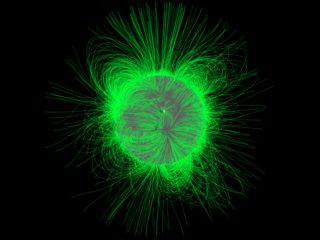
An unmanned Delta rocket lifted off from Cape Canaveral Air Force Station in Florida on Wednesday carrying a pair of solar probes to track potentially disruptive solar storms.
The Solar Terrestrial Relations Observatory, or STEREO, is designed to take three-dimensional pictures of the solar outbursts so scientists can, for the first time, pinpoint where the storms are heading.
The eruptions, called coronal mass ejections, can shut down communications and navigational satellites, affect aircraft near Earth's poles and zap electrical grids as billions of tons of charged particles are sent streaming into space.
"Right now we can only see the sun, essentially, in just two dimensions," said STEREO deputy project scientist Terry Kucera. "We can't tell in some cases whether coronal mass ejections are moving toward us or away from us. That's pretty fundamental."
"With 3-D, we'll be able to tell basic things like how fast is it going, is it speeding up or slowing down?" he said. "These are important things that we need to know if we're going to be able to predict what the impact of a particular event is going to be."
The satellites were launched on a Boeing-built Delta rocket, which lifted off at 8:52 p.m. EDT (0052 GMT).
They were placed in a temporary, looping orbit around Earth. On December 15, lunar gravity will slingshot the first spacecraft into a solar orbit just ahead of Earth's path.
Sign up today and you will receive a free copy of our Future Focus 2025 report - the leading guidance on AI, cybersecurity and other IT challenges as per 700+ senior executives
The second satellite will be flung into an orbit lagging Earth on January 21. From the perspective of the sun, the spacecraft will orbit 45 degrees apart, providing enough distance to work like a pair of human eyes that can see in three dimensions.
STEREO's focus will be on coronal mass ejections, which are huge bubbles of charged particles that blast away from the sun's outer atmosphere after a solar flare. The particles trigger the beautiful auroras seen in the northern and southern skies, but they have a dark side as well.
A massive solar storm in 1989 took out a power grid in Canada, shutting off electricity for 6 million residents. Three years ago, Japan lost contact with a satellite after a series of solar eruptions.
"In terms of space-weather forecasting, we're where weather forecasters were in the 1950s," said Michael Kaiser, a STEREO project scientist. "They didn't see hurricanes until the rain clouds were right above them."
ITPro is a global business technology website providing the latest news, analysis, and business insight for IT decision-makers. Whether it's cyber security, cloud computing, IT infrastructure, or business strategy, we aim to equip leaders with the data they need to make informed IT investments.
For regular updates delivered to your inbox and social feeds, be sure to sign up to our daily newsletter and follow on us LinkedIn and Twitter.
-
 I couldn’t escape the iPhone 17 Pro this year – and it’s about time we redefined business phones
I couldn’t escape the iPhone 17 Pro this year – and it’s about time we redefined business phonesOpinion ITPro is back on smartphone reviews, as they grow more and more intertwined with our work-life balance
-
 When everything connects, everything’s at risk
When everything connects, everything’s at riskIndustry Insights Growing IoT complexity demands dynamic, automated security for visibility, compliance, and resilience

